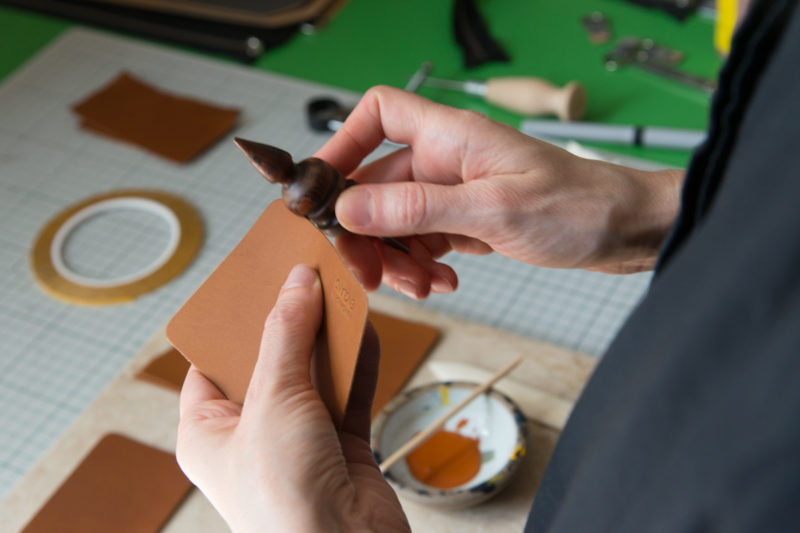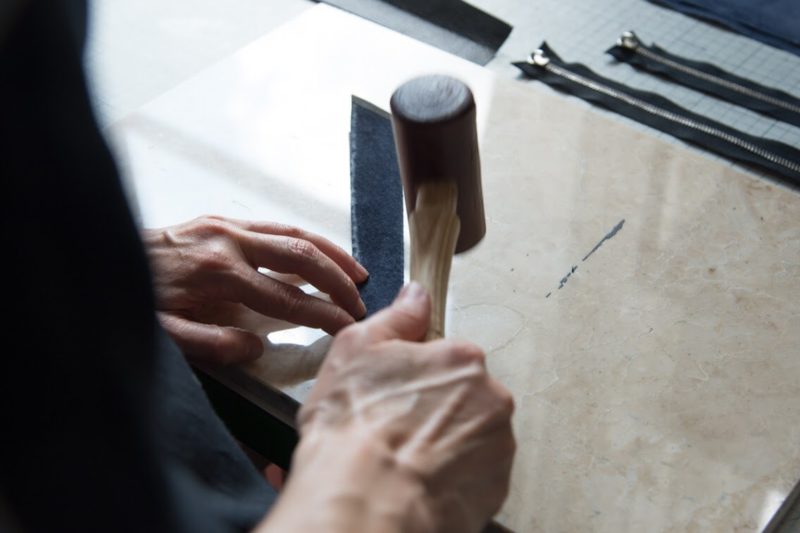How to Restore a Handmade Leather Product
Did you know that you can restore your leather products to as good as new ones? Despite being a durable material, leather does start to crack and discolour when faced with continual wear and tear. No doubt leather reparation kits can be used, but did you know that these leather defects can be easily treated using household materials like olive oil? Household items like vinegar can also be used to repair minor scratches on your leather goods, while everyday things like glue can be used to fix the tiny tears in your leather furniture.
Through this article, we’ll explain why leather goes bad and explain how to restore handmade leather products using commonly available household items. Additionally, we’ll also provide you with suggestions on how to take proper care of your leather products. We believe that seeking professional help should be your last resort, as these DIY leather care suggestions are more than handy.
How Does Leather Go Bad?
Leather is known for its durability and magisterial aesthetic, however, it isn’t impervious to wear and tear. If not correctly cared for, its patina can wear off significantly, and its quality deteriorates rapidly.
Keeping in mind these factors, you can better protect your leather goods and keep them in pristine condition with minimum damage to their grains.
-
Exposure To Sunlight
Exposure to sunlight facilitates the evaporation of the moisture within the leather and causes the grains to dry up and crack. It also acts as a natural bleaching agent and fastens the process of discolouration. It takes as little as four to six months of consistent exposure to completely discolour your leather as it starts to wilt the grains. Once this happens, the leather loses all its natural oil, which otherwise imparts that glossy exterior and will begin to dry up and crack.
-
Extreme Changes In Temperature
Sudden temperature changes can damage the grains of your leather as the alternate expansion and contraction lead to the cracking of the leather’s exterior. Upholstery leather experiences this damage as people often park their car outdoors when the external temperature dips significantly.
-
Not Cleaning Stains Right Away
If you procrastinate the cleaning of a food stain on your leather product, chances are that it may become permanent. Although an effective leather restoration kit consists of leather cleansing sprays that help you clean the stain without damaging the grains of the leather, why’d you want to risk it? The harsh chemicals can corrode the facade of your leather, leading to discolouration and a discontinuity in the texture.
-
Using Harsh Chemicals And Soaps To Clean Your Leather
That being said, don’t cleanse the stains on your leather goods with harsh soaps and detergents. These chemicals may trigger a reaction within the leather grains and cause them to dry and wither away. This diminishes the appeal of your leather goods and dramatically reduces the longevity of the soft leather.
-
Moisture
Most people think that leather is waterproof and therefore are not vigilant in preventing water spills and seepage. If the water gets into the leather, it weakens the leather grains and initiates a discolouration process. The result is a stretched out leather good that cannot be pulled back together. Therefore, always make sure to deal with moisture immediately by regularly soaking up the excess water with a dry sponge.
How to Restore Leather?
If despite your best efforts in maintaining and protecting your leather goods, they are subject to wear and tear, then you can indulge in using these leather restoration techniques.
-
Leather Restoration Kit
You can use a leather restoration kit if the grains of your leather has withered away due to age and excessive use. The treatment involves imparting moisture to the leather grains, which help restore its magisterial patina and protect it from future damage.
-
Olive Oil Or Baby Oil
Use some olive oil if you’ve got a scratch or a small tear in the skin of your leather product. Lightly apply the oil around the affected area with a cotton ball and allow it to dry for an hour. you’ll be shocked by how efficiently olive oil removes these scratches. If the scratch persists, repeat the procedure.
-
Using A Blowdryer
Although heat, in general, is detrimental to the quality of the grains of leather, exposure to a controlled amount of heat can act as a restoration process. Set a blowdryer to the medium setting and then hover above the section of leather that has the scratch. Gently rub over the area with your free hand and watch as the scratch disappears into thin air.
-
Fill or Patch
By using a patch or a filler, you can rectify minor damages on the leather’s surface. Apply the filler to the leather using a knife in thin layers until the hole levels up to the leather surface. Make sure to not force the fabric onto the leather canvas. If the patch does not stick onto the leather despite applying adhesives, it’s best to consult a professional.
-
Dry Environment
One of the most common forms of leather damage is through moulds. People often believe that wrapping their leather goods in plastics safeguards their leather from the mould. To avoid mould growth on your leather, consider moving your leather to a dry place and giving it time to breathe.
Once your leather item is dry, use a cloth or a soft bristle brush to wipe off the mould. Refrain from using a vacuum directly on the leather as it can damage the grains of the leather.
How To Care For Leather?
Let’s now take a look at the techniques you can use to care for your leather goods.
-
Let It Breathe
To prevent damage to the surface of the leather by cracking and rotting, ensuring adequate ventilation is a must. Allow the leather to breathe as it improves the longevity of the product rather than storing it up.
-
Keep Away From Direct Sunlight/Heat
As direct sunlight is detrimental to the grains of your leather, allow your leather to dry naturally even if it takes a long time. Refrain from exposing your leather products to direct heat sources.
-
Conditioning
Regularly indulge in conditioning your leather product using a lint-free cloth, paintbrush, foam sponge or even your hands. This helps in restoring the moisture within the grains of the leather.
-
Regular Cleaning With A Damp Cloth
One of the most efficient ways of caring for your leather is regularly cleaning it using a damp cloth. A minimal wipe-down substantially increases the longevity of the leather product.
Conclusion
When properly cared for, leather is a natural material that will maintain its beauty and appearance for many years. Of all upholstery materials, it’s also the easiest to care for. Each leather type has its own care and cleaning specifications, but the crux of the matter remains the same. Proper leather storage techniques are critical to keeping your leather in pristine condition.
Visit our website and learn more about how you can take care of your leather items and prevent them from wrinkling and degradation. Also, venture into learning more advanced techniques on how to restore leather, because, after all, leather ages gracefully if taken proper care of.





